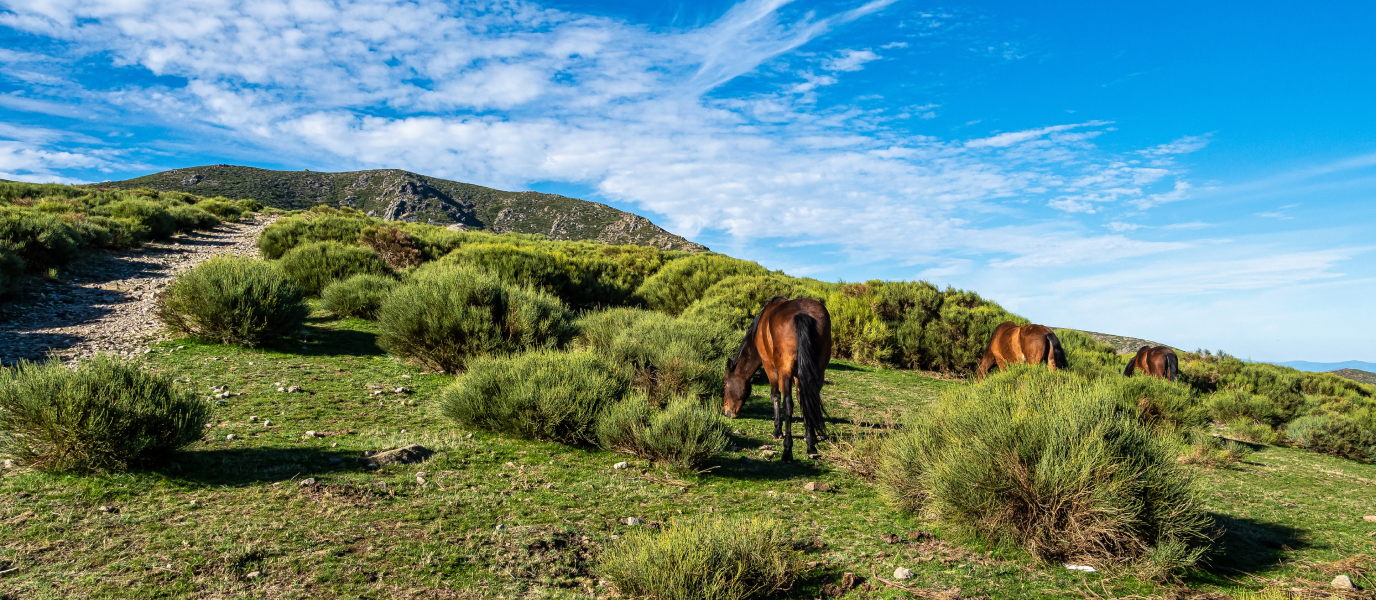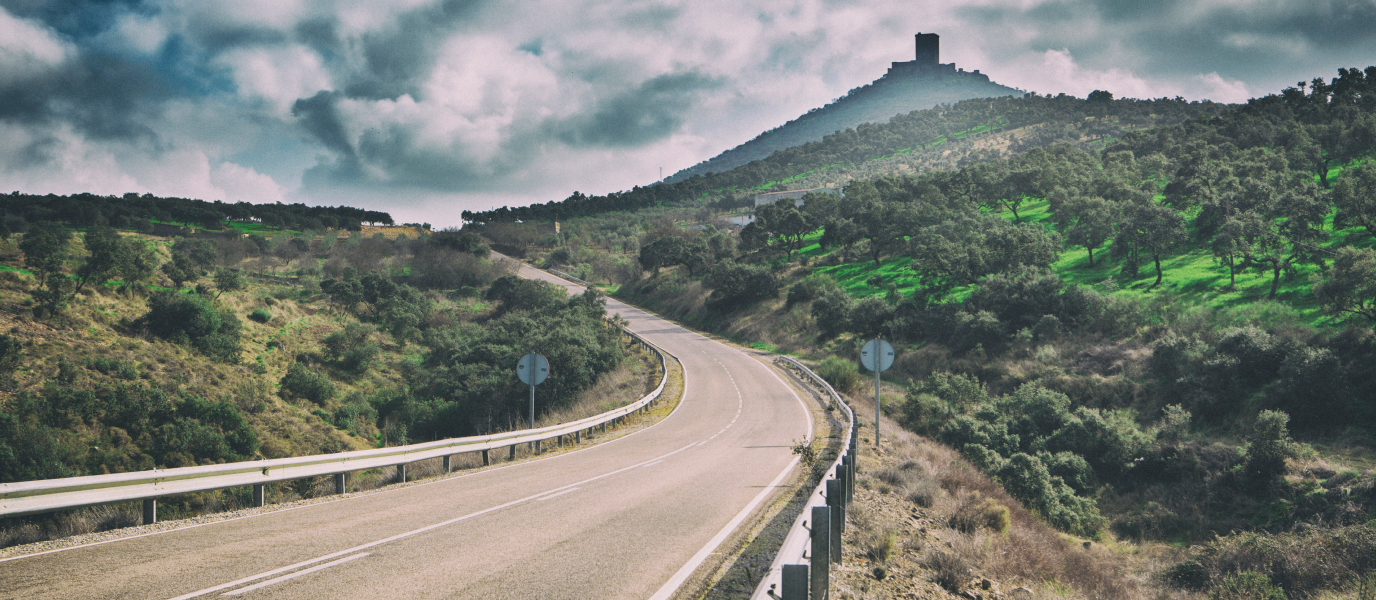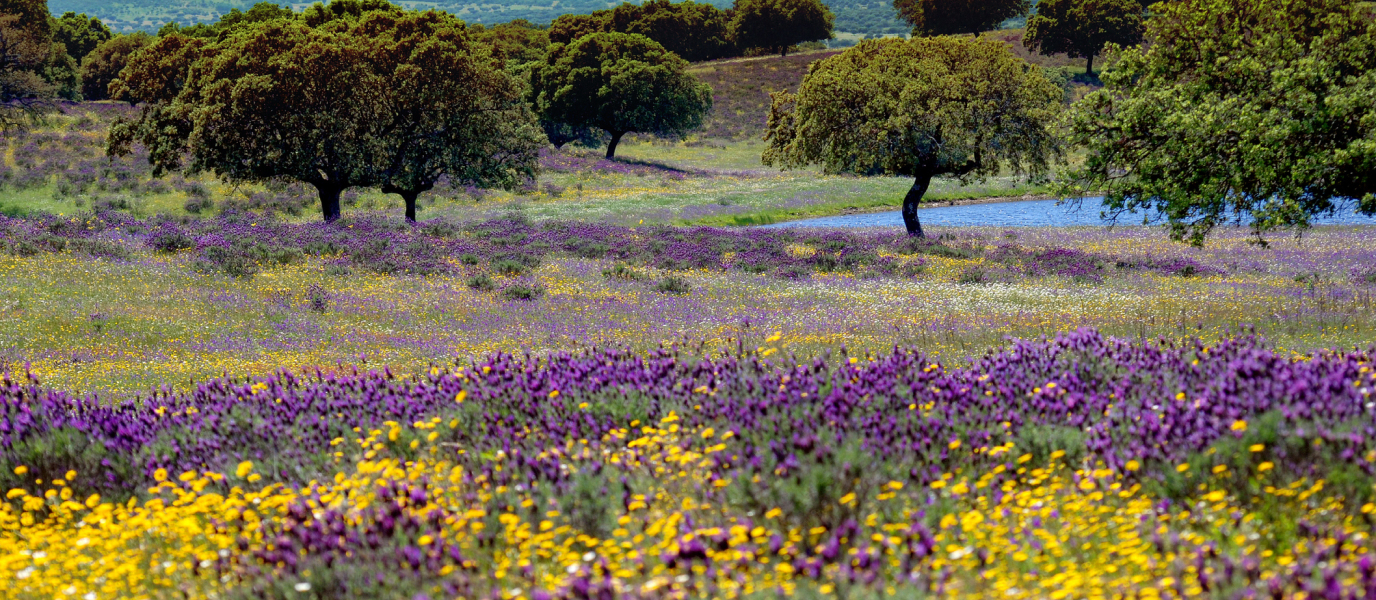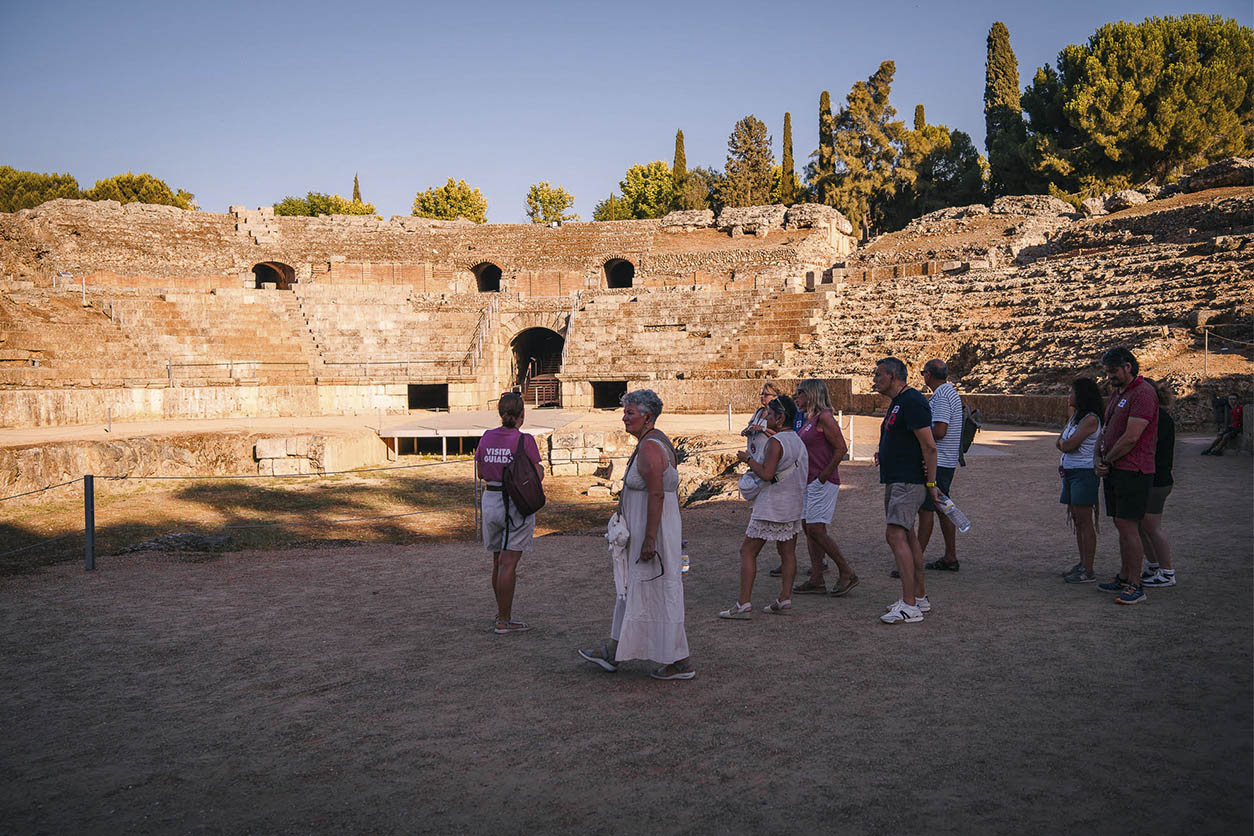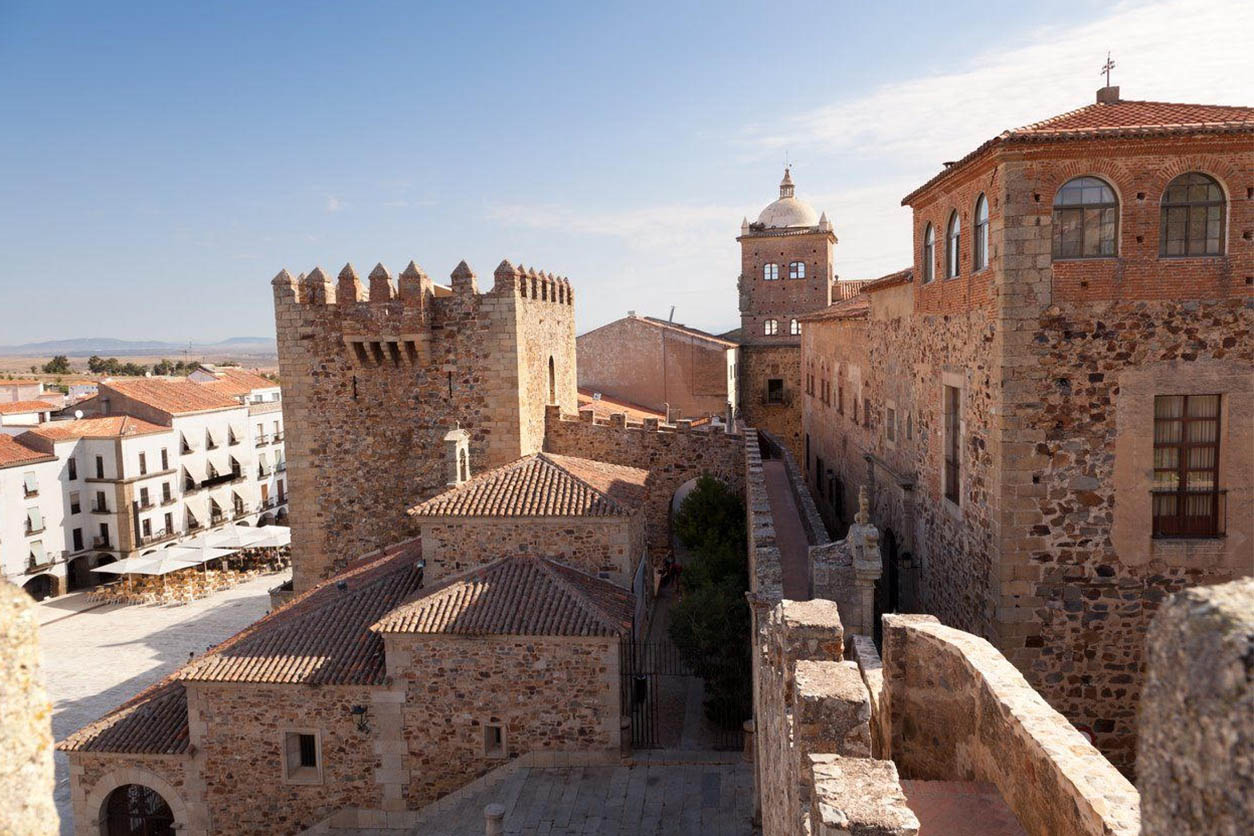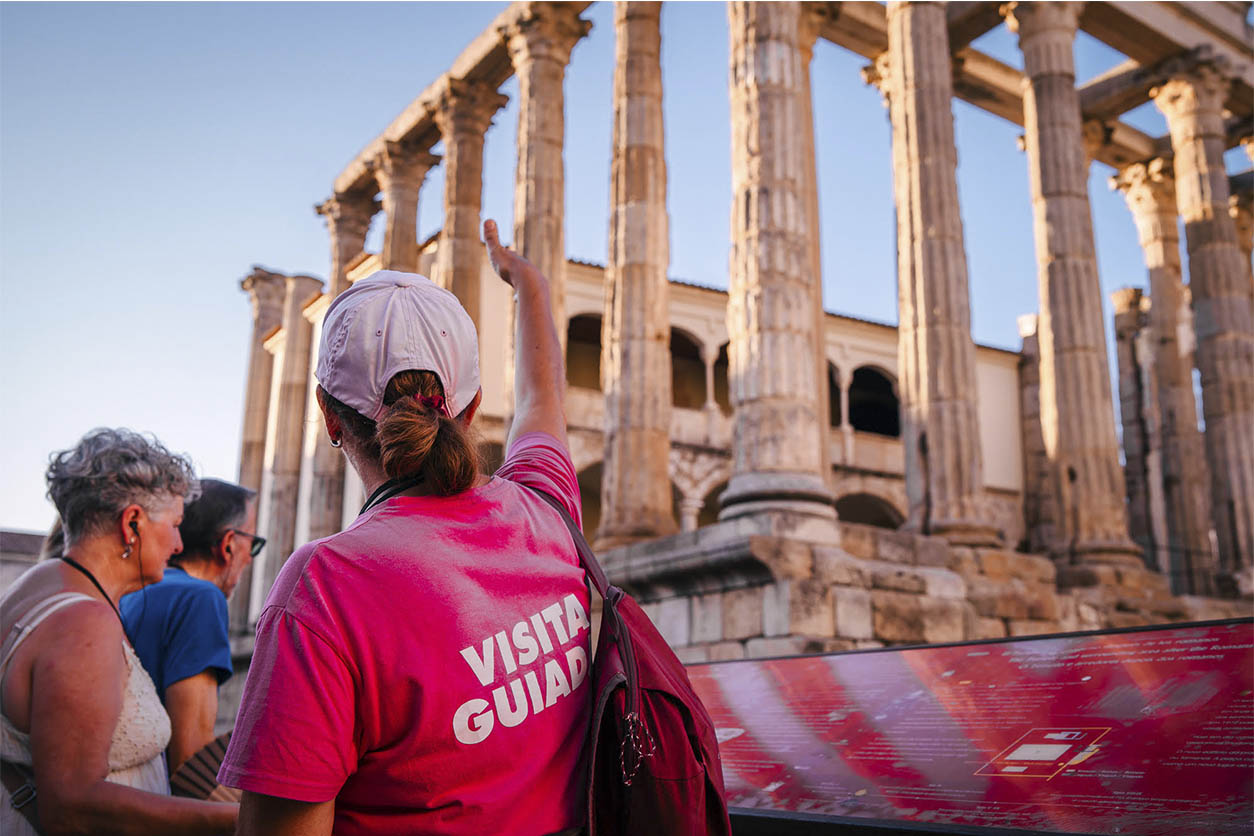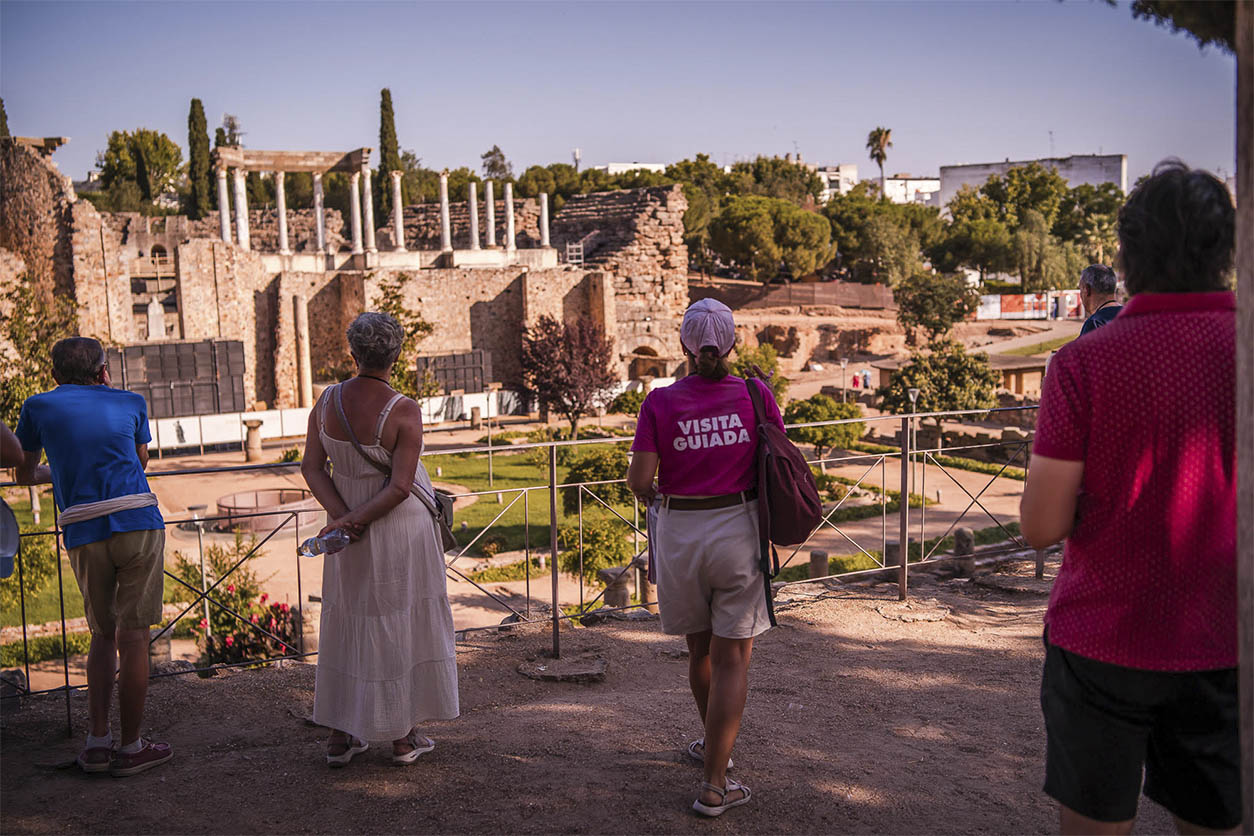When spring arrives, the Jerte Valley and its eleven villages are covered by a white blanket of flowers. Every corner of the Sierra de Gredos mountain range as well as the valley’s gorges and hillsides become enveloped in beautiful cherry blossom. After the long winter, over one and a half million cherry trees come to life, presenting locals and visitors with a breathtaking Spanish sakura (‘blossoming of cherry trees’ in Japanese). The blossoming of the cherry trees of Jerte Valley also marks the beginning of local spring celebrations.
Cherry blossom in the Jerte Valley
The Jerte Valley forms a natural trail, which, over the years, has been used as a Roman road, as well as a place for grazing cattle. Although most towns in the region originate in ancient Celtic settlements, the valley also houses the remains of pre-Roman forts, shepherds’ huts, wooden farmhouses, typical stone houses with thick oak timbers, and caves with archaeological remains, and it has acted as a traditional stopover place for wood pigeons.
If you want to experience the cherry blossom of the Jerte Valley in its full glory, you should take a tour around the valley’s villages. This way you can also experience the different characteristics and traditions of each place. Keep in mind that the first trees to blossom are those in the lower regions with warmer temperatures than higher up in the mountains. However, and although the municipalities are divided into ribereños (located on the banks of the Jerte river) and serranos (in the mountains and on the mountainsides), visiting all of the region’s 11 villages is highly recommended.
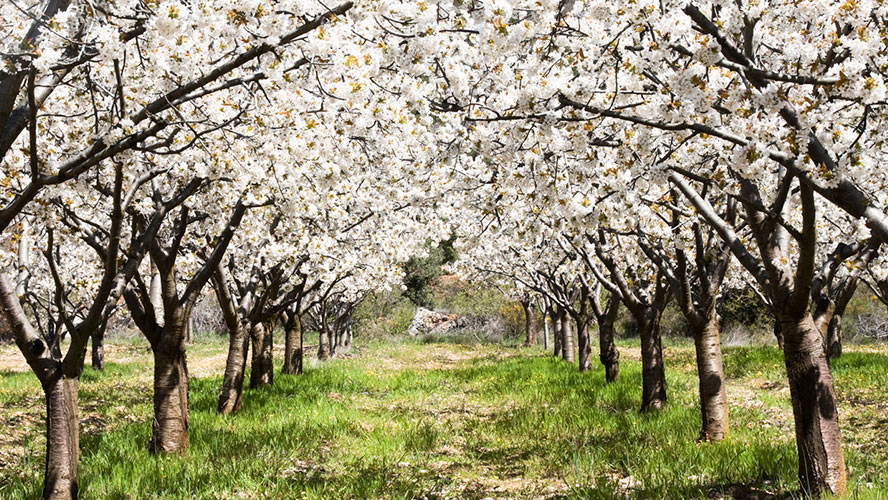
The best way to explore the region is by making a circular route by car, starting from Valdastillas and taking the N110 road that goes past all the villages with the best views of the blossoming Jerte Valley: Piornal, Barrado, Cabrero, Casas del Castañar, El Torno, Rebollar, Navaconcejo, Cabezuela del Valle, Jerte and Tornavacas.
Spring celebrations in the Jerte Valley
The origins of the Cherry Blossom Festival date back to the 1970s, when local town councils agreed to organise a fellowship festival amongst the inhabitants of the valley and the neighbouring regions. Considered to be of National Tourist Interest, the festival includes several cultural, athletic, gastronomic and festive events, organised throughout the valley.
The celebration is divided into three periods:
The waking of the valley: as the ice begins to melt, the valley’s gorges, rivers and waterfalls become filled with water, migratory birds start their journey home, and animal and plant life springs up from the valley’s slopes and forests.
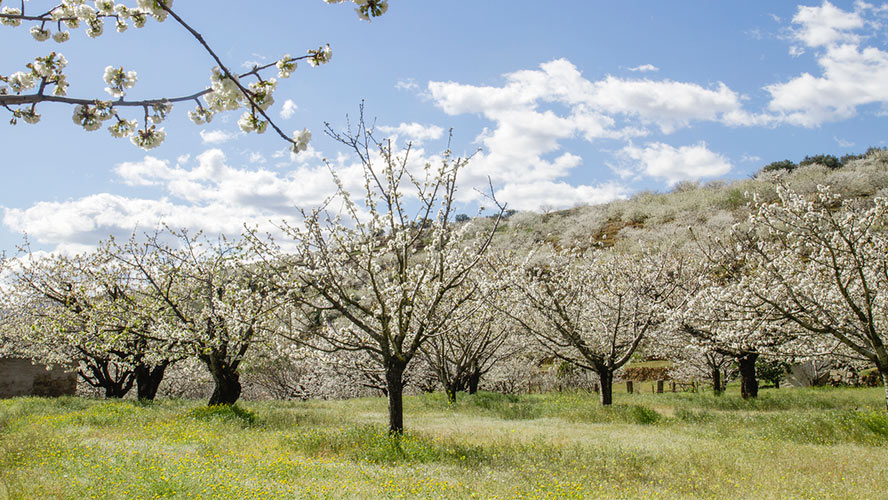
Cherry blossom: the valley is draped in a white blanket of blossom made up of almost two million flowering cherry trees and enveloped in a luscious scent of spring.
Petal rain: at the peak of spring, the white petals leave the branches giving way to the intense green shades of the oak and chestnut trees, the purple heather and yellow broom.
In each celebration period, local villages take part in a diverse range of activities from plays and photography competitions to mountain races and traditional markets. Also, free bus tours are organised through the valley.
Hiking trails that bring you the best of the cherry blossom
Another way to enjoy the spectacular cherry blossom of Jerte is to walk the Ruta de los Cerezos en Flor, a 22-kilometre round trip that takes about seven hours to complete. The route starts from Tornavacas and leads down to the river through the cherry and chestnut forests. Those travelling with children should take the Ruta de Los Pilones, an easy route that takes only an hour to complete. In addition to the beautiful blossoming cherry trees, this route gives you the chance to visit the Garganta de los Infiernos, an impressive gorge with pools filled with crystalline water.
Nevertheless, there is a broad and varied network of trails to choose from that fit all needs and levels of fitness, from the eight-hour long Ruta del Emperador Carlos V to the two-hour long Ruta del Caozo.
Cherry Fair
A few months after the Cherry Blossom Festival, in June and July, the white valley suddenly turns a deep red with the arrival of the awaited picota cherries of Jerte. The event is celebrated in the local villages with picota tastings, cooking workshops, games, storytelling, street entertainment, cultural trails, hiking and a modern handicraft market, amongst other activities.
Cherry cultivation in Jerte
It is believed that the cultivation of cherry trees first became popular in the 18th century as a means of survival, after chestnut trees, native to the Jerte region, almost disappeared because of a devastating blight. But there is another theory suggesting that the cherry trees are linked to a beautiful woman from northern Europe who, according to the tale, once lived in the valley. In her home country, which she greatly missed, every winter, the landscape was covered with a white blanket of snow. So, one day, her husband promised her he would bring snow to the Jerte Valley to make her happy. He gave orders to plant cherry trees and waited for them to bloom in the spring to show them to his wife, who was enthralled with the result. This meant she could enjoy the white landscape of the valley at least for a short period every year.
The third, and perhaps the most rational theory suggests that cherry trees were introduced here by the Moors, and as they adapted well to the local climate, the Christians kept cultivating them in the valley after the Reconquest. According to ancient texts from the 14th century, it was common already at that time for the inhabitants of the valley to offer trout and cherries, two typical products of the area, to their most esteemed guests.




































































